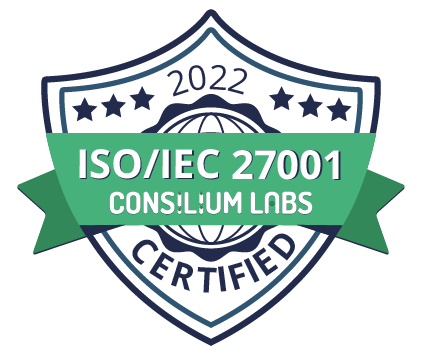“What we need is more people who specialise in the impossible”
Theodore Roethke
Olly Buxton (aka the Jolly Contrarian) recently wrote a pair of posts (part 1, part 2) about the history of in-house legal teams in financial services. Gleefully skewering everyone involved, he recounts the journey of the thousands of lawyers hired by major banks as they cycled through ever-increasing law firm fees, whopping regulatory fines, and cost-saving spasms. It’s an important story if you want to understand the legal industry, funnily told.
What caught my eye were a couple of passages in part 2, which suggested that if you use people on the "outskirts of Hanoi" you are going to have problems:
"But jidoka [applying automation with a human touch - a Toyota/lean concept] requires skill and experience. Rule-followers in low-cost jurisdictions, hired purely for their cheapness, are bad candidates for this role."
And:
"On the other hand, management’s preferred approach: “juniorising” and “right-shoring” create more overheads, more confusion, more bureaucracy, more horizontal escalation, more wasteful audit: in essence, more work for middle management. This is no less a case of special pleading than the lawyers…Instead of answering stupid questions, low-cost off-shore replacements ask them. Measurable costs may have declined — but, all told, probably not all that much, once you factor in that bureaucratic special pleading — but unmeasurable waste will have exploded."
In other words: sure you can ostensibly save some money if you use a firm with an off-shore team (like Radiant Law, let me declare my interest), but beware that you are buying people who act like robots, which creates new costs. Right?
Let's gloss over Olly’s own possible agency problem and turn to another excellent recent post - Four Waves of Change in #LawLand - by Jeff Carr. Jeff is a mainstay of legal industry contrarianism, who I was quoting back when I wrote my “mission statement” at Latham & Watkins in 2009.
Jeff posits a “four waves” model of change in how to support corporate day-to-day legal matters:
- Clarity (changing what we do),
- Cost savings (changing who and where),
- Optimisation (changing how we work), and
- Prevention (changing why we work).
Jeff's four waves jive with Radiant’s experience. Clarity about what the in-house team does is one for our clients, but our starting point was changing the who and where with our offshore centre in South Africa, which does indeed deliver cost savings for our clients.
And so we now come to the difference between Jeff and Olly: does the very act of embracing cost savings in wave 2 mean you have the wrong people to tackle optimisation in wave 3? A critical question as GCs consider their options.
I don’t believe for a second that Olly thinks that any part of the world or group of people has a lock on smarts. His point is a concern about junior rule-followers creating more work. But there are two parts to improving how work is done (wave 3): everyone following the same process and everyone being part of improving that process. This is the difference between a learning team and either a robotic team or the usual chaos of lawyers-as-artists.
So how do you create a learning team?
- You need to align incentives, hence my never-ending railing about the problems with the billable hour and the partnership system, and place the focus on collaboration.
- You need to embed continuous and iterative improvement, which means that you need leadership from the top: the leaders’ work that Jeff describes.
- You need the judgement calls that Ollie argues for, to slash back contract terms and direct the focus on what matters. But a few senior lawyers go a long way, as their contributions are often leverageable: we are fundamentally dealing with standard terms and repeated issues.
- You need the skills and experience of true experts in process improvement, but rather than just adding a master black belt to bang heads as part of one-off improvement events, I recommend the “Karate Kid” model and find someone who can coach the team on an ongoing basis to make the changes themselves. Sure you will be called “grasshopper” a lot, but it works.
- You need to integrate broader skills into the team, from automation and software to data analytics and design, and make sure there is no hierarchy to get in the way.
This environment creates the very opposite of the robotic-like behaviours that worry Olly, and it can be done by “juniors”. In fact, it turns out that junior team members can make huge progress, perhaps helped by being less burdened with certainty about how things should be done.
By following this approach, our team in South Africa has figured out how to support contracts faster, as far as we can tell, than anyone else on the planet. Seriously - we’re running at over 85% half-day turnarounds, top quartile in-house teams average over 11 days. And we also deliver other improvements to our clients’ processes, every quarter.
Let’s be honest, though, this path IS hard. Most external providers have opted for rule-following by itself (or worse, just winging it), and most internal teams can’t muster the will to make these profound changes.
And so we come to the other option that is being sold heavily right now: more-literally robotics, with contract lifecycle management (CLM) software. Why bother doing the heavy lifting on culture, when you can just force through change by implementing heavy-weight automation?
The temptation is obvious, but consider this:
- We got to our performance level by using light-weight automation and rapid experiments, and we know that we will be changing for the foreseeable future. If you automate the process with a CLM’s workflow, you will inevitably have created a complex and fragile beast that can’t be quickly changed. And when you do try to change it, you will find your consultant’s bills to be very expensive.
- Top-down change management is incredibly hard and large IT projects usually underperform, if not fail.
- Getting your team to click new buttons may be attractive in slicing off time on particular tasks, but does it actually address the huge amount of waste going on the rest of their day… or the waste inherent in the process that you just locked-in?
Humans are brilliant and computers are stupid. We’re betting that creating an environment for humans to express that brilliance and giving them great tools (including computers) beats trying to solve the problem by leading with automation. We can check back later which is better, but our performance doesn’t involve CLM (except where it is used by the client and slows us down).
And when it comes to the real challenge identified by Jeff, of solving for the why (wave 4), who wants to bet that binary programmable machines are going to discover the answers first? Wave 4 is not fundamentally a technology problem, and in fact tech can easily get in the way
Jeff describes Wave 4 like this: “This is Next Law and it’s all about prevention. It’s about embracing the concept that legal demand arises from bad or at least ill-advised decisions about products and services provided, about treatment of others, and about deals that fail or deliver no future value. Here we co-opt the safety mantra and believe that every legal problem can be prevented. Our goal is Destination Zero. For example, prevention in this legal area of contract risk means Responsible Revenue Acceleration by understanding the operational, legal, financial, and commercial risks associated with a particular contract and, based on that understanding, making rational decisions about prevention of the situations where risk arises and mitigation of those situations that do arise. With this as the vision and goal, you won’t accept anything other than rigor in behavior. Invariably, this requires a mindset focused on processes and procedures to move ever towards Destination Zero.”
I agree with all of this, and Jeff is right that the “Why” is the holy grail, but I would go further by including the up-side opportunities of the relationship as well as the management of risk.
So how are we going to get there, and what kind of a team does it need? Although I think about this topic a lot, I definitely don’t know all the answers, but I suspect there are going to be at least three components:
- A strong emphasis on purpose, with the team aligned around a goal that is a little loftier than profits or efficiency.
- A broader approach to stakeholders, with lawyers having to leave the proverbial basements so amusingly described by Olly. “Whose why?” may be a helpful starting question.
- A theory of contracting. "There is nothing as practical as a good theory" said Kurt Lewin, and to be able to improve contracting, we need to be able to reason about it and test our reasoning.
My book is my tentative start on articulating an approach based around reasonableness and relationships, but I know I have a long way to go in my thinking. Nice to have a challenge.
So in conclusion:
- Let’s try not to be snobby about foreign teams - the skills we need are taught, not bred into us, and there is no monopoly anywhere on these ideas. Unless, of course, you think the US car industry laughing about the Japanese entrants was a good strategy for long-term survival?
- Once we get to efficient and fast, we are still just starting. Jeff is right that there is far more profound thinking that is needed about the whole purpose of contracting and how value is created. The why matters.
- Surfing waves 3 (the how) and 4 (the why) isn’t going to be about heroic lawyering, automating everything that moves with CLM, or saving a few bucks with a robotic team (wherever they are based). It's going to be cracked by brilliant teamwork, with the right business culture and purpose.
- Finally, anyone who thinks the current reality will continue into the future is seriously kidding themselves, as Olly illustrates with his history lesson. The real open thinkers I have met have usually seen multiple economic cycles and know that things work for a while until they don't. The young have a lot to offer, there is still plenty of room for the old.




















.png)
.jpg)




.jpg)









.png)
.png)




.png)





























.jpg)


